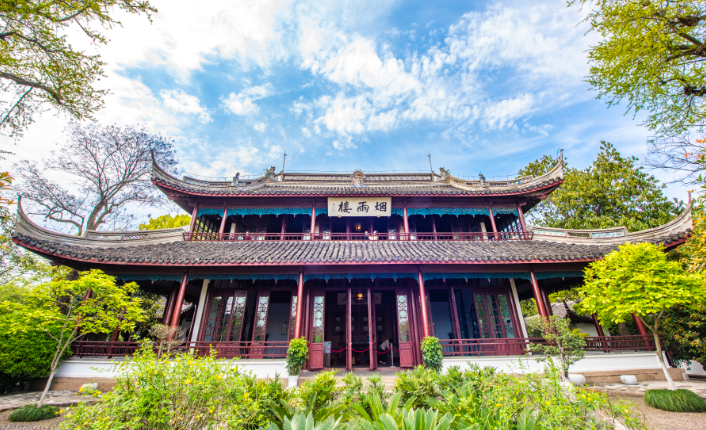
Pavilion of Mist and Rain was named after the Tang Dynasty poet Du Mu's poem “Four hundred and eighty temples in the south, how many buildings in the smoke and rain”. Built in the Five Dynasties after the Jin Dynasty (A.D. 936-947), the first located in the South Lake, Ming Jiajing 28 (A.D. 1549), the second year of the lake island with the silt pile, Yanyulou moved to the island above, and since then has become the core of the ancient architectural complex of the South Lake and the symbol. Over the past four hundred years, the Smoke and Rain Building has been built and destroyed repeatedly and has gone through many vicissitudes. The last major repair before liberation was in 1918, for the governor of Jiaxing Zhang Changqing reconstruction. Smoke and Rain Building is about 20 meters high, divided into two floors, with a floor area of 640 square meters, heavy eaves and painted buildings, vermilion columns and bright windows, with extraordinary momentum. In front of the building hangs a plaque of “Smoke and Rain Building” written by Dong Biwu, and the couplet of the main hall downstairs reads: “Smoke and Rain Building, the revolution was born, and there was a starry fire here, and the world of wind and clouds, the hibernation of spring, and everywhere heard the thunder of Yin.” It was also written by Dong Biwu. Climbing the Smoke and Rain Tower to look at the view of the South Lake is very interesting. Leaning on the fence in summer, the lake is full of lotus leaves; in spring, the rain falls, the lake is hazy, and the scenery is all in the smoke.



